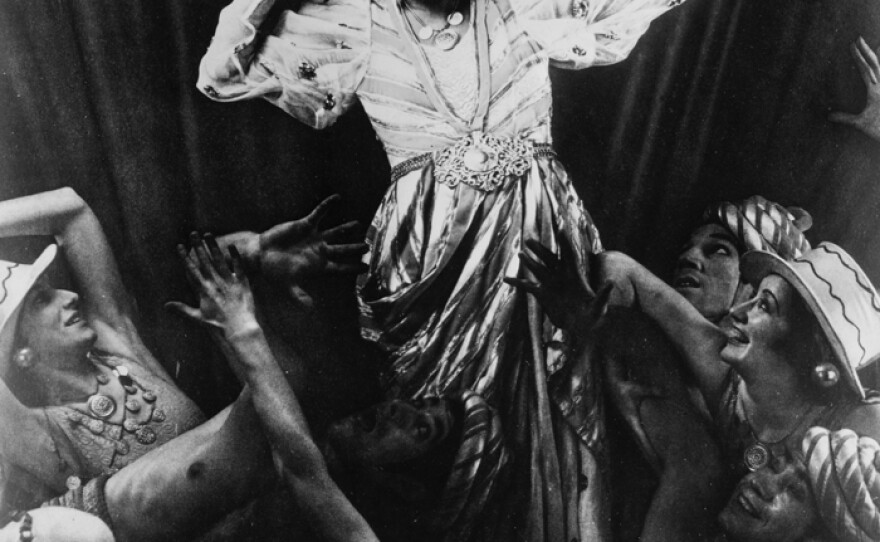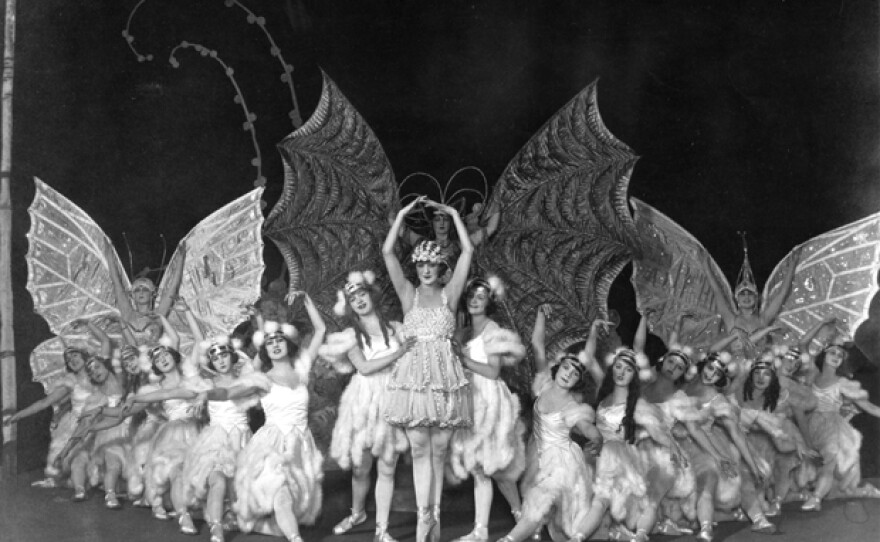This six-part documentary series chronicles the Broadway musical throughout the 20th century and explores the evolution of this uniquely American art form. The series draws on a wealth of archival news footage, lost and found television moments, original cast recordings, still photos, feature films, diaries, journals, intimate first-person accounts and on-camera interviews with many of the principals involved in creating the American musical. 2005 Primetime Emmy for Outstanding Nonfiction Series. It originally aired on Fridays, November 2-16, 2012 on KPBS TV.
Broadway Trivia Quiz
How much do you know about Broadway? Take the quiz and find out!
Timeline
Your Stories
Is there a musical you saw on Broadway or touring in your hometown that you really loved and couldn’t forget or a performer who completely mesmerized you? If so, we want to hear your stories.


Episode Two: "Syncopated City (1919-1933)" - Gossip columnist Walter Winchell gives Broadway a nickname that becomes synonymous with all of New York: “It is the Big Apple, the goal of all ambitions, the pot of gold at the end of a drab and somewhat colorless rainbow….”
With the advent of Prohibition and the Jazz Age, America convulses with energy and change, and nowhere is the riotous mix of classes and cultures more dramatically on display than Broadway.
“There was this period in which everybody was leaping across borders and boundaries,” says director/producer George C. Wolfe. “There was this incredible cross-fertilization, cultural appropriation.”
While brash American women flapped their way to newfound freedoms, heroines of Broadway like Marilyn Miller become a testament to pluck and luck. It’s the age of “Whoopee” and the “Charleston,” "Runnin’ Wild" and the "George White Scandals." In 1921, a jazz show like no other arrives: "Shuffle Along," which features a rich, rousing score by Noble Sissle and Eubie Blake, reopening Broadway’s doors to black talent.
Unique talents like the Marx Brothers and Al Jolson – a Jewish immigrant and Prohibition’s biggest star – rocket to stardom. The Gershwin brothers, the minstrels of the Jazz Age, bring a “Fascinating Rhythm” to an entire nation. Innovative songwriting teams like Richard Rodgers and Lorenz Hart ignite a new age of bright, clever lyrics with the massive hit “Manhattan.”
But as the Roaring Twenties come to a close, Broadway’s Jazz Age suffers the one-two punch of the “talking picture” and the stock market crash, triggering a massive talent exodus to Hollywood and putting an end to Broadway’s feverish expansion.
The episode features interviews with actor Carol Channing, Gershwin sister Frances Gershwin Godowsky, Al Jolson & Co. creator Stephen Mo Hanan, critic Margo Jefferson, writer Miles Krueger, New Yorker theater critic John Lahr, radio host/music critic Jonathan Schwartz, theater historians Max Wilk and Robert Kimball, and director/producer George C. Wolfe.
Highlights include rare performance footage of composer Eubie Blake and a specially animated sequence of Rodgers and Hart’s 1927 hit “Thou Swell” from "A Connecticut Yankee."
Up Next:
Episode Three: "I Got Plenty O' Nuttin' (1930-1942)" will air Friday, April 19, 2013 at 10 p.m.
Watch Syncopated City Preview on PBS. See more from Broadway: The American Musical.





